BY DENISE LU
Walking around in Copenhagen, it’s not hard to see why design is one of Denmark’s biggest exports. The city is filled to the brim with sleek, functional designs that are home-grown, from the iconic Royal Copenhagen porcelain, down to the everyday street lamps and bus stops. For both design connoisseurs or those who are just interested in learning more, here are some locales where you can experience Danish design firsthand.
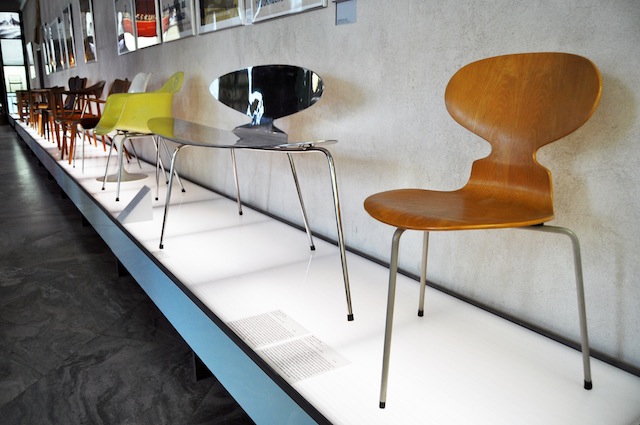
The Designmuseum Danmark (Kunstindustrimuseet) is a good start to get the basics down. The “Utopias and Reality” permanent exhibit is probably one of the best design exhibits in Copenhagen, featuring applied arts and design from Denmark’s Golden Age of design during the post-war period. Our favorite is the long room of iconic chairs from the likes of Kaare Klint, Arne Jacobsen and Hans J. Wegner. Until the end of the year, the museum is also featuring a special exhibit on Finn Juhl, the “enfant terrible” of Danish design. The exhibit features his famously structural, upholstered pieces that visitors can touch and sit in, as well as his intricately drawn watercolor model drawings.
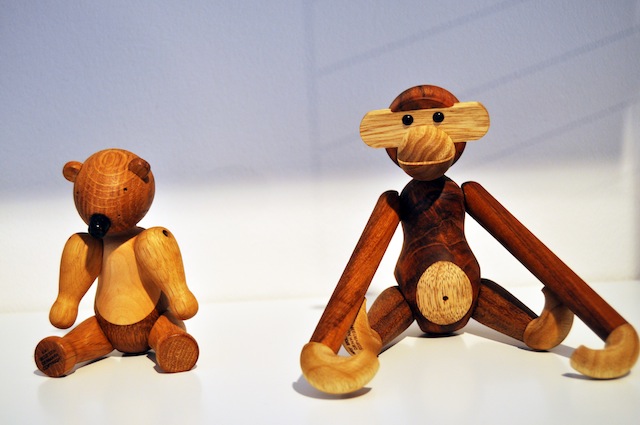
The Danish Design Center near city hall square features another educational permanent exhibit of Danish design from 1940 to modern day where you can sit in a Jacobsen egg chair and play with Kay Bojesen’s wooden toys. The Center also has temporary exhibits featuring new designers who are both Danish and international. Before heading out, grab a very reasonably-priced coffee table book published by the Center for further reading.
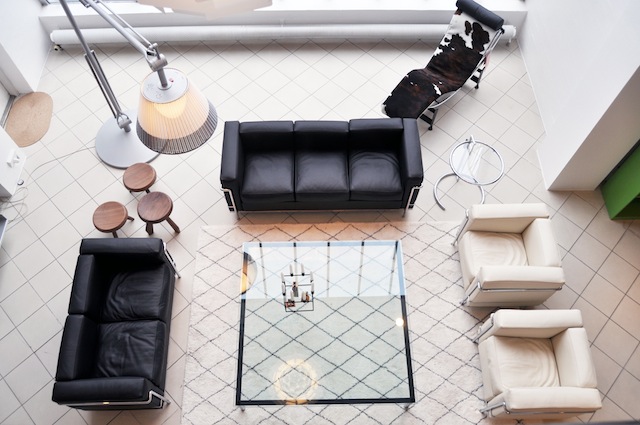
Head over to Paustian near Nordhavn in Østerbro to touch and see Danish furniture firsthand. The large and open furniture store is located in a shipping area on the harbor, a fittingly industrial area for the functional designs it houses. Here you’ll find retro Danish chairs designed by Panton sitting next to American Eames chairs. If anything, at least make the trek to see the building itself, designed by Jørn Utzon, the Danish architect who also designed the Sydney Opera House.
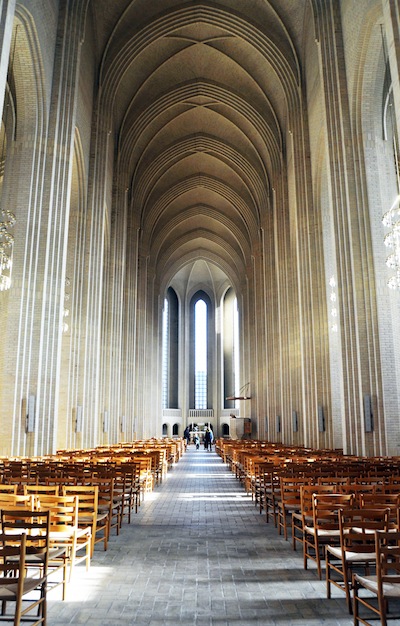
While you’re still a bit far out from city center, stop by Grundtvig’s Church in the Bispebjerg district before heading back downtown. The grandiose church was designed by architect P. V. Jensen-Klint and finished by his son, Kaare Klint, colloquially considered the father of Danish furniture design. Inside lies a sea of Kaare Klint’s church chairs modeled after the functionality and simplicity of the American Shaker chair, the precedent for many famous Danish furniture designer’s own iterations.
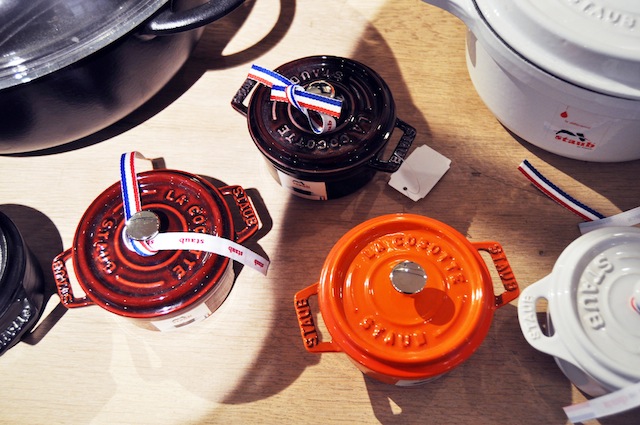
On Strøget, the long walking street in city center, there is the trifecta of Illums Bolighus, Royal Copenhagen and Georg Jensen. The first is an old, high-end department store housing four floors worth of everything from kitchenware to lamps to clothing. The store features Danish and other Scandinavian design, alongside international brands like Iittala of Finaland or Alessi of Italy.
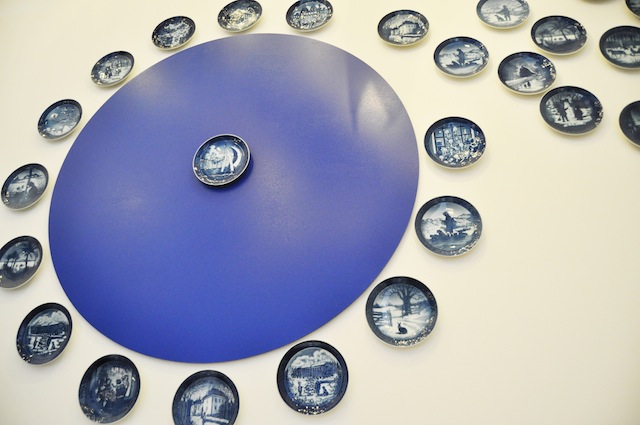
Connected to Illums Bolighus is the Royal Copenhagen flagship store featuring its iconic hand-painted and hand-glazed Blue Fluted Plain Collection, the first porcelain dinner service adopted by the royal family in 1775, as well as more modern designs such as the 2011 Mega series by young designer Karen KjÃ…ldgaard-Larsen, which is a playful take on the original series. During the holiday season, the store also hosts an annual table-setting exhibit featuring tables set by famous Danish celebrities. Limited edition collectable plates are also released every year along with decorations for Jul, the Danish Christmas.
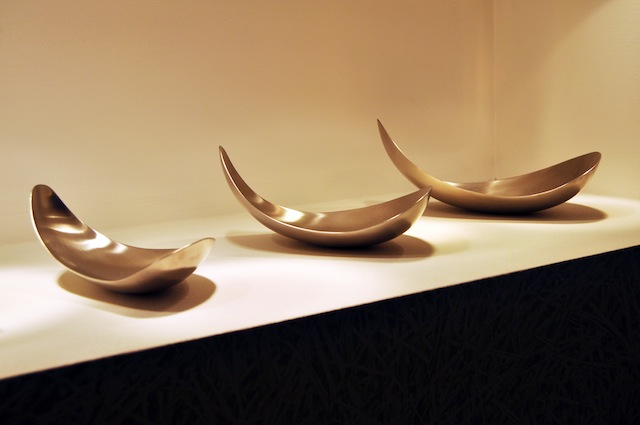
On the other side of Royal Copenhagen is the Georg Jensen flagship store, also featuring iconic designs from its original Jensen designs to the post-war silver designs of Henning Koppel and Jacobsen’s futuristic cutlery set (which were featured in Kubrick’s 2001: Space Odyssey) designed originally for the SAS Hotel in 1957. The store has cutlery and flatware as well as jewelry and homeware.
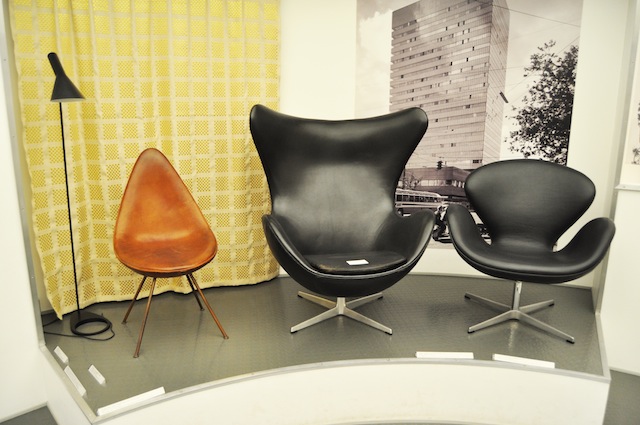
The SAS Hotel by Copenhagen Central Station was the the city’s first skyscraper, built in 1960. Still standing tall in the Copenhagen skyline, the hotel was originally furnished by Jacobsen with his credo of “spoon to city,” the idea to design a total environment. Thus Jacobsen designed the furniture and the aforementioned silver cutlery, and even the exterior façade of the building. However, after the hotel was refurbished, most of Jacobsen’s original designs were thrown out. Now, only room 606 has the original designs and furnishings, including the Egg, Drop and Swan chairs, making it a coveted reservation.

For newer design, the Hay House on Strøget is a dream for lovers of simple, minimalist style. The innovative new design house, founded in 2002, has pushed to the forefront of Danish design. Browse the completely Hay-furnished showroom, from stationery and office products to bedding and even furniture, all designed in-house.
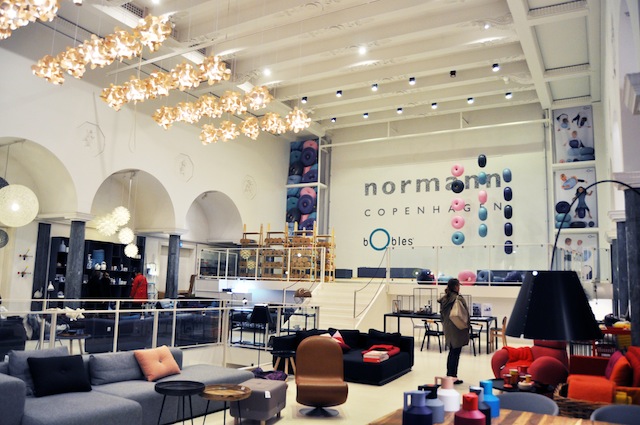
The Normann Copenhagen flagship in Østerbro is another relatively new design house found at the turn of the century featuring original new designs as well as renditions of older Danish design, such as its new take on the Herbert Krenchel bowls in bold new colors. The showroom is large and organized by color for easy browsing, while the lower floor features clothing by modern Danish and Scandinavian designers.
Ørested on the island of Amager are the grounds for new architectural experiments in Copenhagen. The area, which until recently was broad, untouched fields, now houses towering contemporary buildings that stand like pieces of art in an empty gallery. Notables are the VM Houses, The Moutain and The 8 House, all extravagant in scale and dynamics. Another is Tietgenkollegiet, which features experimental construction of a college dormitory, an example of where Danish architecture will venture towards in the near future.
 ABOUT DENISE:
ABOUT DENISE:
Denise Lu is a junior at the Medill School of Journalism at Northwestern University where she studies journalism and economics. She is currently studying abroad in Copenhagen, Denmark while also hopping around multiple countries in Europe. She loves strange music, street photography and wholesome food. With a love for entertainment and culture writing, she maintains a personal music blog at the omelette chronicles and does amateur food photography at eat your jams. Follow her on Twitter @DeniseDSLu.



